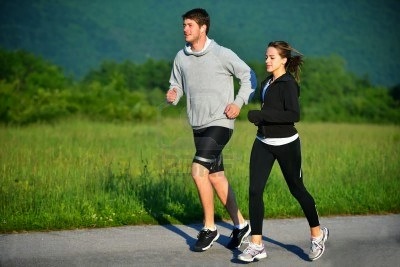 Since it was a bit of a hiking weekend, I decided to consider the topic from a health and fitness standpoint rather than from a fun and adventure standpoint. What I will say generally applies to all aerobic activities (ie rowing, biking, swimming, etc).
Since it was a bit of a hiking weekend, I decided to consider the topic from a health and fitness standpoint rather than from a fun and adventure standpoint. What I will say generally applies to all aerobic activities (ie rowing, biking, swimming, etc).
- First off, most articles we search discuss these topics in terms of weight loss and calorie-burning. That is nonsense. Unless you devote several hours/day to these things with a carb-restricted diet, they will do nothing for your fat. Let's take that off the table and accept that body fat is about nutritional choices and nothing else.
- Second, we are talking about things which are often referred to as "cardio" fitness and cardio training. They really are not cardio training without the high heart rate which can not be attained for healthy people through walking or jogging. Similarly for skeletal muscle strength. For general endurance, good. True "cardio training" entails repeated anaerobic sprints of almost any activity (often termed HIIT. You can do HIIT with kettlebell swings, wall ball slams, road-sprints, sprint pool laps, or anything that stresses the heck out of you for 30-60 seconds). 15-20 minutes (including rests) of HIIT accomplishes far more for cardio fitness than an hour of aerobic activity.
Third, recreational hiking, jogging, swimming, biking, rowing are more the happy rewards of fitness than stimuli to increased fitness. I can hike 10 miles because I am somewhat fit, not to become fit. Nonetheless, they are the sorts of things that distinguish an "active" person from a "sedentary". "Sedentary" roughly refers to a person with less than 8-10 hours/week of intentional, vigorous physical activity (not strolling, or housework or easy stuff), or less than 6 hours of high-intensity physical activity/week. A good measure of "high-intensity" is that you are short of breath most of the time.
- Except for newbies, the elderly, or the infirm, the above relatively low-intensity aerobic activities (I hesitate to term them "exercise" because they lack the high exertion component) are just fine for maintaining mobility and endurance for casual activities. They do not increase fitness once you can do them. Any healthy person can walk 10 miles, jog 3-5 miles, or swim a mile of laps. Still, aerobic endurance is a handy thing for life enjoyment.
- Walking and jogging put the same lower-body muscles to use. Both are easy on the hamstrings, which can lead to a muscle imbalance if jogging is your only activity. Anyway, these are not strength-builders or meaningful cardio training (because there is not a high-enough cardio stress once you have adapted to them).
- Jogging on cement or asphalt on a daily basis will come back to your joints at some point. For "long, slow", once/week is enough for a fit person who works out daily in other ways along with recreational physical activities such as sports. Running is speedy jogging with a long stride and sprinting is sprinting.
More on the topic below the fold -
- Jogging (aka slow running with a shorter stride) is obviously more intense than walking, but it is only minimally "cardio" fitness training. If you can jog for an hour or bike for three hours, that is OK endurance. If I sometimes seem to disparage these activities it is because they do nothing to build lower body strength or cardio function. Sprints and HIIT are the only things that can do that, combined with weights and calisthenics. So if you do a 3-5 mile jog each morning, or a mile aerobic swim, great. It's not a complete waste of time but it won't help you improve your general fitness. You will feel mentally better, though.
- For general fitness buffs, use your "long slow" as recovery days from more intense exercises like weights and calisthenics. Once you have attained a good level of fitness, an hour of comfortable-speed jogging, swimming, or biking will, if anything, keep you moving and help with recovery. HIIT, on the other hand, is "real exercise, " real cardio fitness training.
- Calisthenics are designed to combine cardio stress with moderate muscle stress without heavy weights. 60 seconds of jumping jacks or jump rope is true cardio, especially if you go into 60 seconds of lunges immediately. I am a believer in the necessity for weight training (especially for women), but general conditioning/calisthenics are a good place for newbies to start their fitness journey.
- Usually good "cardio" or "conditioning" classes at gyms focus on creating anaerobic stresses more than aerobic. They want their customers panting for breath, feeling a touch of nausea, and sweating like pigs. Do pigs sweat? Anyway, those sorts of high-intensity classes are great for general fitness, endurance, and cardio conditioning (but not too much for strength-building). They are fun once you get to know the regulars and learn the routines.
My final suggestion on the topic is to start exercising at your level daily, and regularly increase the intensity, challenge, and variety of your routines. I will eagerly await our readers' arguments.


 Since it was a bit of a hiking weekend, I decided to consider the topic from a health and fitness standpoint rather than from a fun and adventure standpoint. What I will say generally applies to all aerobic activities (ie rowing, biking, swimming, etc).
Since it was a bit of a hiking weekend, I decided to consider the topic from a health and fitness standpoint rather than from a fun and adventure standpoint. What I will say generally applies to all aerobic activities (ie rowing, biking, swimming, etc).